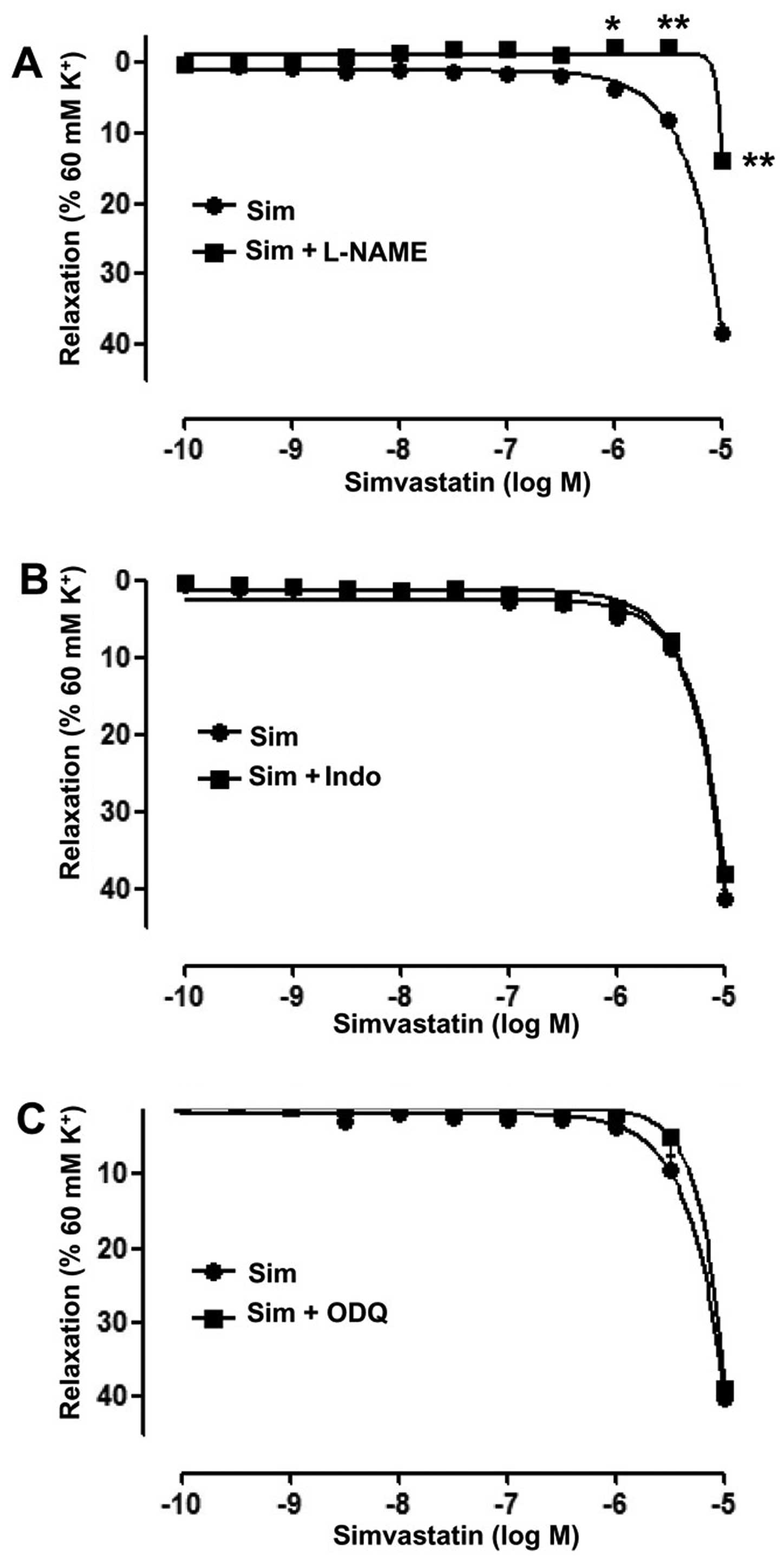Mechanisms of simvastatin-induced vasodilatation of rat superior mesenteric arteries
- Authors:
- Published online on: September 12, 2016 https://doi.org/10.3892/br.2016.756
- Pages: 491-496
Metrics:
Total
Views: 0 (Spandidos Publications: | PMC Statistics:
)
Total PDF Downloads: 0 (Spandidos Publications: | PMC Statistics:
)
Abstract
Independent of its lipid-lowering properties, simvastatin (Sim) induces vasorelaxation; however, the underlying mechanisms have remained elusive. The aim of the present study was to investigate the vasorelaxant effects of Sim on rat superior mesenteric arteries and the mechanisms involved. The isometric tension of rat superior mesenteric arterial rings was recorded in vitro on a myograph. The results showed that Sim concentration‑dependently relaxed the superior mesenteric artery rings with endothelium pre‑contracted by phenylephrine hydrochloride [maximum relaxation (Emax)=51.05±4.09%; negative logarithm of the concentration that caused 50% of the maximum response (pD2)=4.17±0.18] or KCl (Emax=41.65±1.32%; pD2=3.55±0.1). Nω‑nitro‑L‑arginine methyl ester (100 µM) significantly inhibited this effect, while it was not affected by 1H‑[1,2,4]oxadiazolo[4,3‑a]quinoxalin‑1‑one (10 µM) and indomethacin (5 µM). In artery rings without endothelium, vasorelaxation induced by Sim was attenuated by 4‑aminopyridine (100 µM), but was not affected by barium chloride dehydrate (10 µM), glibenclamide (10 µM) and traethylammonium chloride (1 mM). Moreover, Sim also inhibited the contraction induced by increasing external calcium in Ca2+‑free medium with added KCl (60 mM). These results suggested that Sim induces relaxation of superior mesenteric arterial rings through an endothelium‑dependent pathway, involving nitric oxide release and also through an endothelium‑independent pathway, involving the opening of voltage‑dependent K+ channels and blockade of extracellular Ca2+ influx.















